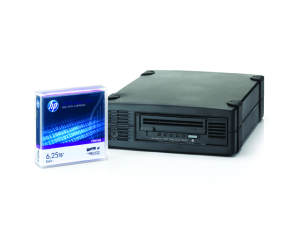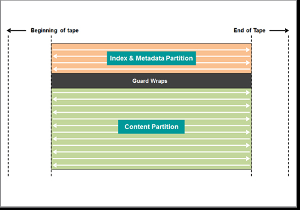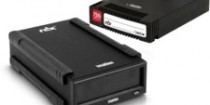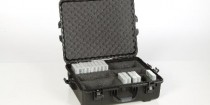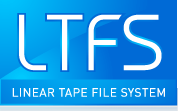 What is LTFS
What is LTFS
Linear Tape File System (LTFS) allows you to use an LTO 5, LTO 6 or higher generation drive as if it were an external hard drive or USB drive. This provides users with traditional advantages of tape (reliability, longevity, portability and low cost) with a familiar interface providing users faster and easier direct access to files on data tape. LTFS is an open standard developed by IBM that is cross-platform compatible (Windows, Mac, Linux). You can save your data or project to tape, send it to a co-worker, customer, editor and, as long as they have the hardware and LTFS software, they can read it.
Cost Effective
If you are regularly using external hard drives as long term storage, LTO using LTFS may be cost effective. A high quality 1TB USB 3.0 external hard drive costs about $120, or $120/TB, while an LTO 6 tape with a capacity of 2.5TB costs $44 or less than $18/TB. Keep in mind, with LTO and LTFS you need to purchase an LTO 6 drive for about $2360* so the break even point is about 25 1TB external hard drives. Prices are as of October 2014.
To take advantage of LTFS you need three things:
- An LTO 5, LTO 6 or future generation LTO tape drive
- Free LTFS Software installed on your computer that allows your operating system to work with LTO tapes written in the LTFS format. This software can be downloaded from the manufacturer of your LTO tape drive. Follow these links to download free LTFS software: IBM, HP, Quantum, Tandberg, Storage Tek, Imation
- An LTO 5 or LTO 6 Tape Cartridge
With this, you can now use the LTO Tape Drive and Tape just like an external hard drive or USB drive.
- Files and directories show up on desktop as a directory tree listing
- Use drag-and-drop to move files to and from LTFS tape
- Supports faster data interchange between end users and systems
Think of the possibilities
The media and entertainment industry is utilizing LTFS tape to store, share and archive raw and master content. Note: IBM and FOX Networks received an Engineering Emmy Award in 2011 for using LTFS to improve the ability of media companies to capture, manage and exploit content in digital form.
Some other uses for LTFS and LTO Tapes
- Healthcare for storing high resolution images such as medical X-Rays or scans
- Security Surveillance and Video Storage
- Oil & Gas Exploration
- Architectural drawings
- Military: video backup and archive
- Information archival for e-discovery purposes
Tape Partitioning
When you format an LTO tape for LTFS, the tape is split into two partitions:
- One partition, the Index Partition (IP), is used to store information about the file structure, file names, file format, and other data elements that are indexed
- The second partition, the Data Partition (DP), contains the actual files that are stored on the tape
When a tape is loaded into a tape drive, the complete file folder image is displayed. The file structure is pulled from the Index Partition, and the raw file content is accessed from the Data Partition.
Reliability
Unlike a hard drive that has heads and electronics, an LTO tape is a simple spool of tape with no moving parts. The read/write technology is in the tape drive and not in the cartridge. This means that an LTO tape has a better chance of surviving a disaster than a hard drive. Additionally, LTO tape has an archival life of 30 years under proper conditions. Therefore, information stored on an LTO tape has a far greater chance of survival than information on a hard drive.
* HP StoreEver LTO-6 Ultrium 6250 SAS External Tape Drive

